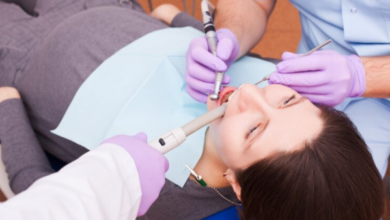6 Latest Practices in the Health Care Sector

The healthcare sector is witnessing significant shifts in the traditional trends that have been followed for years. The latest healthcare advancements include the acceptance of technology into the sector. New techniques and solutions enhance workflows and staff scheduling and provide connected infrastructure, devices, and systems to accelerate accurate and reliable clinical services.
From personalized medicine to telehealth, these practices are revolutionizing the way we receive medical care and paving the way for a healthier future.
Personalized Medicine
Gone are the days of one-size-fits-all treatment plans. Personalized medicine considers an individual’s unique genetic makeup, lifestyle, and medical history to provide tailored treatments. Through genetic testing and advanced diagnostics, healthcare providers can identify the most effective therapies for each patient, minimizing side effects and optimizing outcomes.
Personalized medicine like trans healthcare is transforming the landscape of healthcare by making treatments more targeted and precise.
Telehealth
Telehealth, or remote healthcare, has gained immense popularity in recent years, especially during the COVID-19 pandemic. It allows patients to receive medical consultations, diagnoses, and even treatments from the comfort of their own homes, using video calls and other digital platforms. Telehealth has proven to be a convenient and accessible solution, particularly for patients in rural areas or those with limited mobility.
It has also reduced the strain on healthcare facilities and improved access to care for individuals who may have previously faced barriers.
Artificial Intelligence (AI) in Diagnostics
Artificial intelligence is revolutionizing the field of diagnostics by augmenting the capabilities of healthcare professionals. AI algorithms can analyze vast amounts of medical data, including images, lab results, and patient records, to detect patterns, identify anomalies, and make accurate diagnoses. Now a medical director can ensure the delivery of quality medical care.
This technology enables faster and more accurate diagnoses, helping doctors provide timely and targeted treatments. AI-powered diagnostics have the potential to improve patient outcomes and reduce healthcare costs in the long run.
Robotic-assisted Surgery
Precision surgery, also known as robotic-assisted surgery, combines the expertise of surgeons with the precision and dexterity of robotic systems. Surgeon’s control robotic arms equipped with surgical instruments, which provide enhanced visualization and precise movements during complex procedures.
This technology allows for minimally invasive surgeries, resulting in smaller incisions, reduced scarring, and quicker recovery times for patients. Precision surgery is advancing surgical techniques and improving patient safety and outcomes.
Remote Patient Monitoring
Remote patient monitoring involves using connected devices to track patients’ health data outside of traditional healthcare settings. These devices can collect vital signs, monitor chronic conditions, and transmit real-time data to healthcare providers.
Remote patient monitoring enables early detection of potential health issues and facilitates proactive interventions, ultimately improving patient care and reducing hospital readmissions. It also empowers patients to take an active role in managing their health.
Blockchain Technology in Healthcare Sector
Blockchain technology, known for its association with cryptocurrencies, has found applications in the healthcare sector as well. It offers a decentralized and secure way to store and share medical records, ensuring data privacy and integrity.
With blockchain, patients have greater control over their health information, and healthcare providers can access a comprehensive and accurate medical history. This technology has the potential to streamline healthcare operations, enhance interoperability, and improve patient outcomes.




